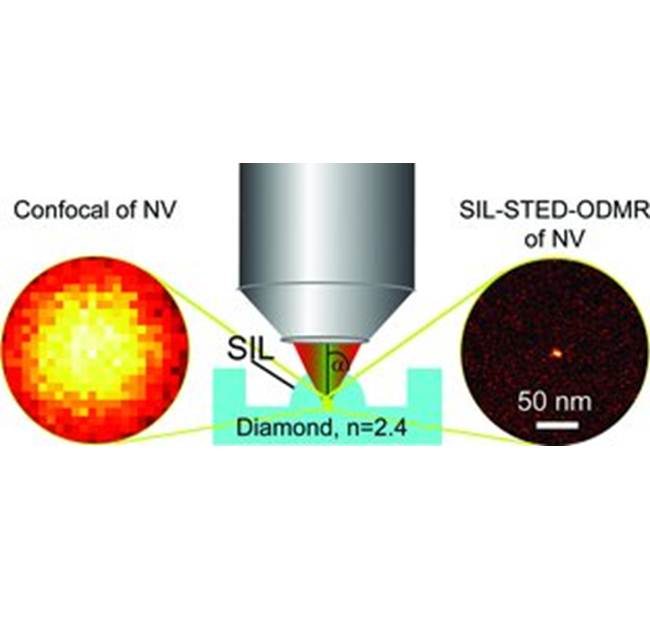
Standard far-field optical microscopy techniques provide noninvasive access to the interior of transparent samples with a resolution limit about half of the wavelength of light. Providing resolutions no longer limited by diffraction, emerging far-field optical nanoscopy or superresolution techniques are transforming the life sciences, but also have implications for materials sciences, for example on quantum computation in solid state systems. A candidate for such a system is the negatively charged nitrogen vacancy (NV) point defect in diamond.
Dominik Wildanger, Stefan W. Hell (Max Planck Institute for Biophysical Chemistry, Göttingen) and co-workers explored the maximum spatial resolution achievable in far-field optical imaging by applying solid immersion lenses (SIL) to stimulated emission depletion (STED) microscopy of single NV centers. They were able to address single spins with a resolution down to 2.4 ±0.3 nm which corresponds to 1/322 of the wavelength. The signal increase gained through SIL improved the precision with which the position of individual NV centers can be determined below an Ångström.
These results set a new benchmark for the resolving power of far-field optical imaging. Furthermore, the unique combination of high resolution and high signal opens the door to numerous spin-spin interaction studies and present a step towards the realization of a scalable quantum computer at room temperature.
The research was reported in Advanced Optical Materials, a new section in Advanced Materials dedicated to breakthrough discoveries and fundamental research in photonics, plasmonics, metamaterials, and more, covering all aspects of light-matter interactions. To get Advanced Optical Materials email alerts click here. Advanced Optical Materials will start as an independent journal in 2013. More information can be found on www.advopticalmat.de.

















